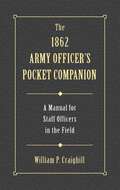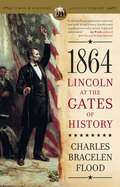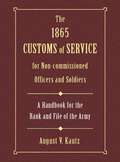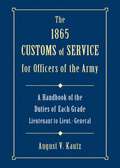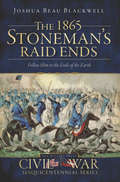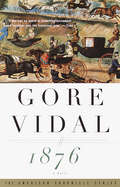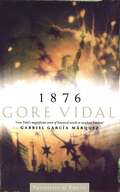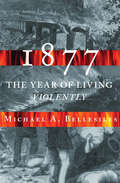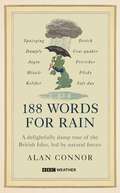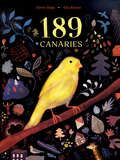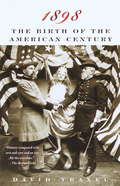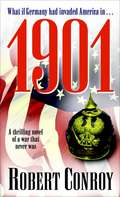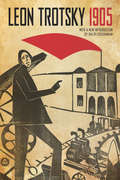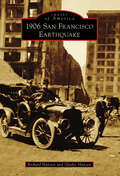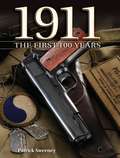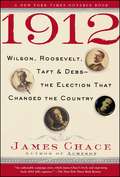- Table View
- List View
1862 Army Officer's Pocket Companion
by William P. CraighillUnique summary of "military science" as it stood at the beginning of the Civil War.
1862 US Cavalry Tactics
by Philip St. CookeDirected by the U.S. War Department in 1859 to prepare a new, revised manual for U.S. cavalry operations, then-Col. Philip St. George Cooke produced this book after extensive research of cavalry tactics used by the advanced nations in Europe, where he had been an observer in the Crimean War (1854-1856). Originally published in 1860, the book was revised in 1861 and 1862. This 1862 Government Printing Office edition combines the former two volume work into one book.
1863 Laws of War
by U.S. War Department• The "rules of warfare" and "government of the army" as they existed in the American Civil War• All 101 Articles of War as amended through June 1863 including the famous Lieber Code (General Orders No. 100), directed by President Lincoln, which expanded the laws of land warfare and General Orders No. 49 on the granting of paroles• Copious extracts from the Revised U.S. Army Regulations through June 1863This compendium of laws and rules is a testimony to America's reverence for the rule of law as well as its high regard for "civilized" behavior on the battlefield. The Articles of War were normative rules covering military duty and punishments allowed for violations. The Lieber Code was a new and profound law for the conduct of armies in the field, to include humane treatment of prisoners and protection of property and civilians. It had a profound affect on the evolution of the laws of land warfare in use today. Army Regulations, on the other hand, dealt with the administration and management of the army-from personnel assignments to supply and recruiting operations-all three sets of rules were used by both the Union and Confederate armies.An essential reference for students, historians, writers, reenactors, and those interested in how our Civil War armies operated.
1863 US Infantry Tactics
by U.S. War Department• The authorized book for the instruction, exercise, and maneuver of U.S. Infantry during the Civil War• Includes articles of war, an extensive dictionary of Civil War military terms, and sheet music for military bugle calls• A must-have book for historians, researchers, reenactors, and writersWritten in 1861 at the direction of the War Department and copiously illustrated, this was the book used to train, lead, and maneuver U.S. Infantry units on Civil War battlefields. It contains the school of the soldier, the company, and battalion or fielded regiment, along with all-important instructions for skirmishers. Over 15 pages of field music, the articles of war in use at the time, and a dictionary of Civil War military terminology completes this extensive work.
1863: A Novel of the Civil War (Young Founders)
by Elizabeth MassieAmerica as seen through the eyes of its young founders.By April 1863 the Civil War has been raging for two years. On their sleepy farm in Gettysburg, sixteen-year-old twins Susanne and Stephen are alarmed by news that Confederate forces under General Robert E. Lee are threatening to invade the North for a strike at Washington, D.C.! Rebel forces in the Union capital? Is it possible?Bored with farm life and itching for action, Stephen runs away to join the beleaguered Army of the Potomac to fight Johnny Reb. Susanne decides to join a nursing outfit to assist the Union's wounded. Sparated by war, death, and disease, the twins maintain a correspondence. But little do they know that Union and Confederate forces are converging on a small town for a battle that may determine the outcome of the war--a town called Gettysburg.At the Publisher's request, this title is being sold without Digital Rights Management Software (DRM) applied.
1864
by Charles Bracelen FloodIn a masterful narrative, historian and biographer Charles Bracelen Flood brings to life the drama of Lincoln's final year, in which he oversaw the last campaigns of the Civil War, was reelected as president, and laid out his majestic vision for the nation's future in a reunified South and in the expanding West.
1865 Customs of Service for Non-Commissioned Officers & Soldiers
by August KautzReproduction edition of the Civil War era guidebook. Indispensable for historians and reenactors.
1865 Customs of Service for Officers in the Army
by August KautzThe 1865 Customs of Service for Officers in the Army
1865 Stoneman's Raid Ends, The: Follow Him to the Ends of the Earth (Civil War Ser.)
by Joshua Beau BlackwellIn the spring of 1865, George Stoneman's cavalry division departed Salisbury, North Carolina, with one objective in mind: returning home. However, after the collapse of the Confederacy, the mounted division was ordered to apprehend the exiled Confederate president Jefferson Davis, even if it meant "follow[ing] him to the ends of the earth."? By May, the raid had transformed into an uphill struggle of frustration, pillage, revenge, terror and wavering loyalty to the flag as the troopers crashed down on the civilian populations that lay in their path with demonical ferocity. Taking into account local folklore and traditions of the raid, historian Beau Blackwell follows the column's course as it sacks the city of Asheville, canvasses the Palmetto State, plunders Greenville, terrorizes Anderson and ultimately tramples the soil of Georgia.
1867: How the Fathers Made a Deal
by Christopher Moore“In the 1860s, western alienation began at Yonge Street, and George Brown was the Preston Manning of the day. ” So begins Christopher Moore’s fascinating 1990s look at the messy, dramatic, crisis-ridden process that brought Canada into being – and at the politicians, no more lovable or united than our own, who, against all odds, managed to forge a deal that worked. From the first chapter, he turns a fresh, perceptive, and lucid eye on the people, the issues, and the political theories of Confederation – from John A. Macdonald’s canny handling of leadership to the invention of federalism and the Senate, from the Quebec question to the influence of political philosophers Edmund Burke and Walter Bagehot. This is a book for all Canadians who love their country – and fear for it after the failure of the constitution-making of the 1990s. Here is a clear, entertaining reintroduction to the ideas and processes that forged the nation. From the Hardcover edition.
1876 (Vintage International)
by Gore VidalThe third volume of Gore Vidal's magnificent series of historical novels aimed at demythologizing the American past, 1876 chronicles the political scandals and dark intrigues that rocked the United States in its centennial year.------Charles Schermerhorn Schuyler, Aaron Burr's unacknowledged son, returns to a flamboyant America after his long, self-imposed European exile. The narrator of Burr has come home to recoup a lost fortune by arranging a suitable marriage for his beautiful daughter, the widowed Princess d'Agrigente, and by ingratiating himself with Samuel Tilden, the favored presidential candidate in the centennial year. With these ambitions and with their own abundant charms, Schuyler and his daughter soon find themselves at the centers of American social and political power at a time when the fading ideals of the young republic were being replaced by the excitement of empire.------"A glorious piece of writing," said Jimmy Breslin in Harper's. "Vidal can take history and make it powerful and astonishing." Time concurred: "Vidal has no peers at breathing movement and laughter into the historical past."------With a new Introduction by the author.
1876: Number 3 in series (Narratives of empire)
by Gore VidalWith the centennial year of the United States as the target of this historical novel, Gore Vidal again mounts a glorious expedition into that grimy and intricate activity called politics. And this is politics as it ought to be: gossip, corruption, money, dinner parties, more corruption, and all the tacky panoply of power. Into the rarefied atmosphere of a world where money has begun to talk very loudly ? usually through the mouths of people called Astor ? step Charles Schuyler and his daughter Emma. Charlie is the unacknowledged bastard son of Aaron Burr; Emma is rather beautiful; and both think it is prudent to return from penury in Europe and secure a fortuitous marriage for Emma. But America is no longer a young republic; it's a fledgling international superpower with its attendant seedy administration, dubious election campaigns, snobbery, 'popped corn', 'speaking tubes' and 'perpendicular railways' (lifts). It's a world that will welcome into its social and political bosom these two attractive exotics with the right names. And it's a world whose every political peccadillo, social slip-up and irresistible intrigue is recorded in this, the journal of Charlie Schuyler.
1877: America's Year of Living Violently
by Michael A. Bellesiles&“[A] powerful examination of a nation trying to make sense of the complex changes and challenges of the post–Civil War era.&” —Carol Berkin, author of A Brilliant Solution: Inventing the American Constitution In 1877—a decade after the Civil War—not only was the United States gripped by a deep depression, but the country was also in the throes of nearly unimaginable violence and upheaval, marking the end of the brief period known as Reconstruction and reestablishing white rule across the South. In the wake of the contested presidential election of 1876, white supremacist mobs swept across the South, killing and driving out the last of the Reconstruction state governments. A strike involving millions of railroad workers turned violent as it spread from coast to coast, and for a moment seemed close to toppling the nation&’s economic structure. Celebrated historian Michael A. Bellesiles reveals that the fires of that fated year also fueled a hothouse of cultural and intellectual innovation. He relates the story of 1877 not just through dramatic events, but also through the lives of famous and little-known Americans alike. &“A superb and troubling book about the soul of Modern America.&” —William Deverell, director of the Huntington-USC Institute on California and the West &“A bold, insightful book, richly researched, and fast paced . . . Bellesiles vividly portrays on a single canvas the violent confrontations in 1877.&” —Alfred F. Young, coeditor of Revolutionary Founders: Rebels, Radicals, and Reformers in the Making of the Nation &“[A] wonderful read that is sure to appeal to those interested in the challenges of creating a post–Civil War society.&” —Choice
188 Words for Rain: A delightfully damp tour of the British Isles, led by natural forces (an official BBC Weather book)
by Alan Connor‘Alan knows everything, knows everyone, and writes beautifully too.’RICHARD OSMAN‘The man with the contents of the Oxford English Dictionary stored just above his left eyebrow … and he’s quite funny too.’RORY CELLAN-JONES'A gorgeous, funny tour of the British Isles as seen from the clouds.’KONNIE HUQFor fans of THE ETYMOLOGICON and VERY BRITISH PROBLEMS, a delightfully damp tour of the British Isles. Mizzle. Dreich. Raining knives and forks. A real mugga-fisty. A spot of plother...We Brits love talking about the weather. So much so that our islands have hundreds of words and phrases for rain, some self-explanatory and others that really leave us scratching our heads. From a light smirr in Aberdeen to a "it's raining knives and forks!" in the Brecon Beacons, each type of rain tells a story about the people and places it falls on.In this delightfully damp tour of the British Isles, writer and puddle-splasher Alan Connor digs deep into the meaning and quirky histories of over one hundred words for precipitation. He gets caught in a plash in Northumberland, crashes a fox's wedding in Devon and ponders the phenomenon of Brits-who-picnic-in-the-car, in this charming and witty celebration of our very British obsession.
189 Canaries
by Dieter BögeIn a cozy room in northern Germany, a yellow canary sings rolling melodies to the miners and carpenters of the Harz mountains. But today a bird dealer has come, and he will take the canary far, far away from everything he knows. The journey leads onto trains and steamships, across Europe and even the Atlantic. At last the canary arrives in a room in New York where he hears a strangely familiar song…This beautiful, poignant book introduces readers to the little-known history of a beloved songbird. Lushly illustrated in rich colors, 189 Canaries is an unforgettable story about music, migration, and the search for home.
1898: The Birth of the American Century
by David TraxelHistorian Traxel narrates the extraordinary events of 1898 to unfold the story of America's metamorphosis from a rural, isolationist society into a commanding presence on the world stage. The account centers upon America's first foray into international military affairs, the Spanish-American War, but also covers worker uprisings, racial conflict, the last battle between Native Americans and the US Army, advances in technology, and the growing importance of advertising. Annotation c. by Book News, Inc. , Portland, Or.
19 de julio: El día de la furia
by José C. BlandinoEl día de la furia. <p><p>En el Madrid previo al levantamiento militar, un joven opositor sevillano procura sobrevivir a los albures de la gran ciudad. <p>Sin embargo, no puede evitar ser devorado por los formidables acontecimientos de una época convulsa y peligrosa de la que acaba convirtiéndose en involuntario protagonista.
1901: A Thrilling Novel of a War that Never Was
by Robert ConroyThe year is 1901. Germany's navy is the second largest in the world; their army, the most powerful. But with the exception of a small piece of Africa and a few minor islands in the Pacific, Germany is without an empire. Kaiser Wilhelm II demands that the United States surrender its newly acquired territories: Guam, Puerto Rico, Cuba, and the Philippines. President McKinley indignantly refuses, so with the honor and economic future of the Reich at stake, the Kaiser launches an invasion of the United States, striking first on Long Island. Now the Americans, with their army largely disbanded, must defend the homeland. When McKinley suffers a fatal heart attack, the new commander in chief, Theodore Roosevelt, rallies to the cause, along with Confederate general James Longstreet. From the burning of Manhattan to the climactic Battle of Danbury, American forces face Europe's most potent war machine in a blazing contest of will against strength.
1905
by Leon TrotskyLeon Trotsky's 1905-despite long being out of print-has remained the central point of reference for those looking to understand the rising of workers, peasants, and soldiers that nearly unseated the Tsar in 1905. Trotsky's elegant, beautifully written account draws on his experience as a key leader of the revolution.
1906 San Francisco Earthquake (Images of America)
by Richard Hansen Gladys HansenOne of the greatest disasters of the twentieth century, in words and photos. The Great Earthquake and Fire of 1906 was an unparalleled catastrophe in the history of San Francisco. More than 4.5 square miles of the city burned and crumbled into a windswept desert of desolation. This book is filled with remarkable images, from before the earthquake through the blaze and into the rebuilding. With stories from survivors, and extensive photographs of sites from the waterfront in the east to Golden Gate Park in the west, the marina in the north to the Mission District in the south, readers can gain a vivid sense of this major historical event and how it affected one of America&’s greatest cities.
1911 The First 100 Years
by Patrick SweeneyIn 1911, the history of firearms changed forever with the adoption of the greatest pistol ever designed, the Automatic Pistol, Caliber . 45, M1911 - known today simply as the 1911. Now, in one fascinating, illustrated volume, authority Patrick Sweeney celebrates the 100th anniversary of the greatest fighting handgun ever designed, John M. Brownings legendary 1911 . 45. From the predecessors of the 1911 and its contemporaries to the best of today's semi- and -full-custom models, you'll find it in 1911: The First 100 Years. Lavishly illustrated with photographs collected from around the world, 1911: The First 100 Years is a fitting centennial tribute to a pistol that is today more popular than ever. For the collector, for the shooter, for the historian - for anyone interested in big-bore handguns or the evolution of this truly American classic, this is a must-have volume.
1912
by James ChaceFour extraordinary men sought the presidency in 1912. Theodore Roosevelt was the charismatic and still wildly popular former president who sought to redirect the Republican Party toward a more nationalistic, less materialistic brand of conservatism and the cause of social justice. His handpicked successor and close friend, William Howard Taft, was a reluctant politician whose sole ambition was to sit on the U.S. Supreme Court. Amiable and easygoing, Taft was the very opposite of the restless Roosevelt. After Taft failed to carry forward his predecessor's reformist policies, an embittered Roosevelt decided to challenge Taft for the party's nomination. Thwarted by a convention controlled by Taft, Roosevelt abandoned the GOP and ran in the general election as the candidate of a third party of his own creation, the Bull Moose Progressives.Woodrow Wilson, the former president of Princeton University, astonished everyone by seizing the Democratic nomination from the party bosses who had made him New Jersey's governor. A noted political theorist, he was a relative newcomer to the practice of governing, torn between his fear of radical reform and his belief in limited government. The fourth candidate, labor leader Eugene V. Debs, had run for president on the Socialist ticket twice before. A fervent warrior in the cause of economic justice for the laboring class, he was a force to be reckoned with in the great debate over how to mitigate the excesses of industrial capitalism that was at the heart of the 1912 election.Chace recounts all the excitement and pathos of a singular moment in American history: the crucial primaries, the Republicans' bitter nominating convention that forever split the party, Wilson's stunning victory on the forty-sixth ballot at the Democratic convention, Roosevelt's spectacular coast-to-coast whistle-stop electioneering, Taft's stubborn refusal to fight back against his former mentor, Debs's electrifying campaign appearances, and Wilson's "accidental election" by less than a majority of the popular vote.Had Roosevelt received the Republican nomination, he almost surely would have been elected president once again and the Republicans would likely have become a party of reform. Instead, the GOP passed into the hands of a conservative ascendancy that reached its fullness with Ronald Reagan and George W. Bush, and the party remains to this day riven by the struggle between reform and reaction, isolationism and internationalism. The 1912 presidential contest was the first since the days of Jefferson and Hamilton in which the great question of America's exceptional destiny was debated. 1912 changed America.
1912: The Year the World Discovered Antarctica
by Chris Turney"The South Pole discovered" trumpeted the front page of The Daily Chronicle on March 8, 1912, marking Roald Amundsen's triumph over the tragic Robert Scott. Yet behind all the headlines there was a much bigger story. Antarctica was awash with expeditions. In 1912, five separate teams representing the old and new world were diligently embarking on scientific exploration beyond the edge of the known planet. Their discoveries not only enthralled the world, but changed our understanding of the planet forever. Tales of endurance, self-sacrifice, and technological innovation laid the foundations for modern scientific exploration, and inspired future generations.To celebrate the centenary of this groundbreaking work, 1912: The Year the World Discovered Antarctica revisits the exploits of these different expeditions. Looking beyond the personalities and drawing on his own polar experience, Chris Turney shows how their discoveries marked the dawn of a new age in our understanding of the natural world. He makes use of original and exclusive unpublished archival material and weaves in the latest scientific findings to show how we might reawaken the public's passion for discovery and exploration
1912: Wilson, Roosevelt, Taft & Debs - the Election That Changed the Country
by James Chace Ellen R. SasaharaBeginning with former president Theodore Roosevelt's return in 1910 from his African safari, Chace brilliantly unfolds a dazzling political circus that featured four extraordinary candidates. When Roosevelt failed to defeat his chosen successor, William Howard Taft, for the Republican nomination, he ran as a radical reformer on the Bull Moose ticket. Meanwhile, Woodrow Wilson, the ex-president of Princeton, astonished everyone by seizing the Democratic nomination from the bosses who had made him New Jersey's governor. Most revealing of the reformist spirit sweeping the land was the charismatic socialist Eugene Debs, who polled an unprecedented one million votes. Wilson's "accidental" election had lasting impact on America and the world. The broken friendship between Taft and TR inflicted wounds on the Republican Party that have never healed, and the party passed into the hands of a conservative ascendancy that reached its fullness under Reagan and George W. Bush. Wilson's victory imbued the Democratic Party with a progressive idealism later incarnated in FDR, Truman, and LBJ. 1912 changed America.
1913
by Shaun Whiteside Florian Illies Jamie Lee SearleJust before one of its darkest moments came the twentieth century's most exciting year . . .It was the year Henry Ford first put a conveyer belt in his car factory, and the year Louis Armstrong first picked up a trumpet. It was the year Charlie Chaplin signed his first movie contract, and Coco Chanel and Prada opened their first dress shops. It was the year Proust began his opus, Stravinsky wrote The Rite of Spring, and the first Armory Show in New York introduced the world to Picasso and the world of abstract art. It was the year the recreational drug now known as ecstasy was invented.It was 1913, the year before the world plunged into the catastrophic darkness of World War I.In a witty yet moving narrative that progresses month by month through the year, and is interspersed with numerous photos and documentary artifacts (such as Kafka's love letters), Florian Illies ignores the conventions of the stodgy tome so common in "one year" histories. Forefronting cultural matters as much as politics, he delivers a charming and riveting tale of a world full of hope and unlimited possibility, peopled with amazing characters and radical politics, bristling with new art and new technology . . . even as ominous storm clouds began to gather.From the Hardcover edition.
